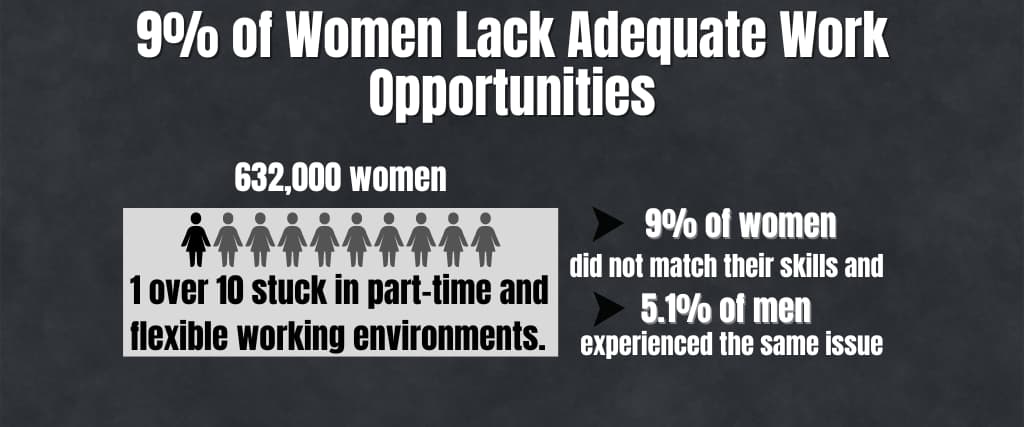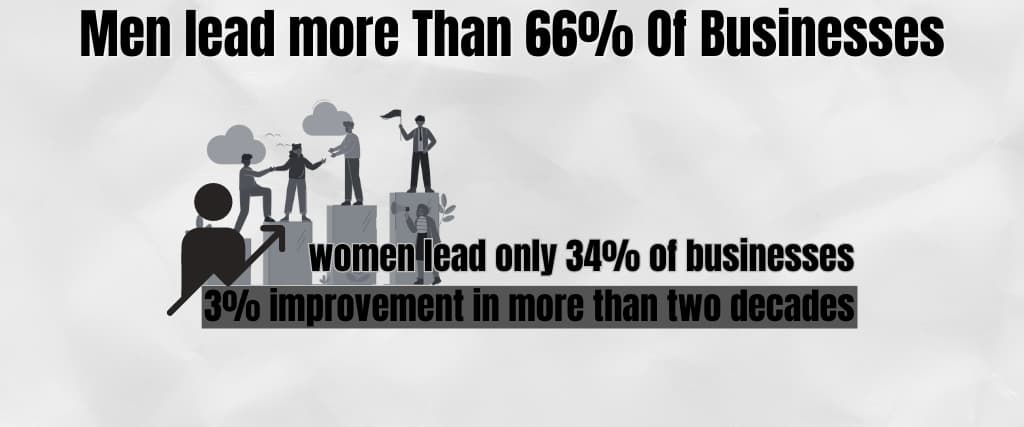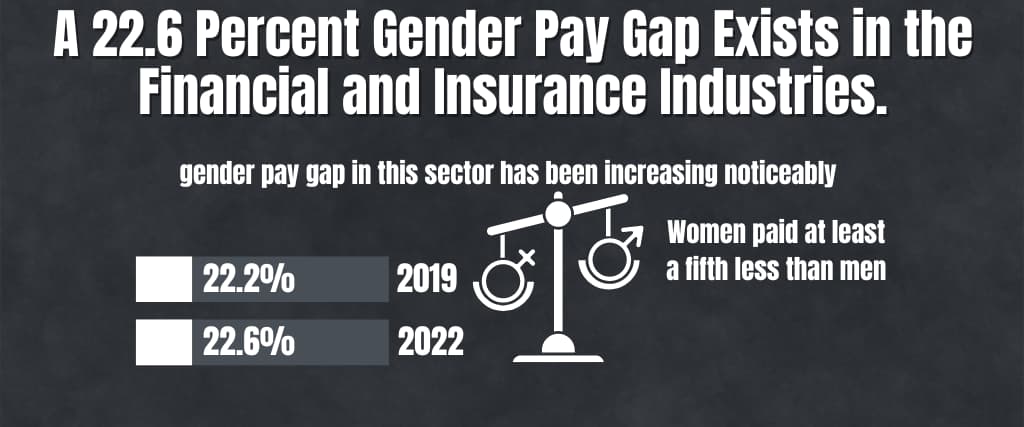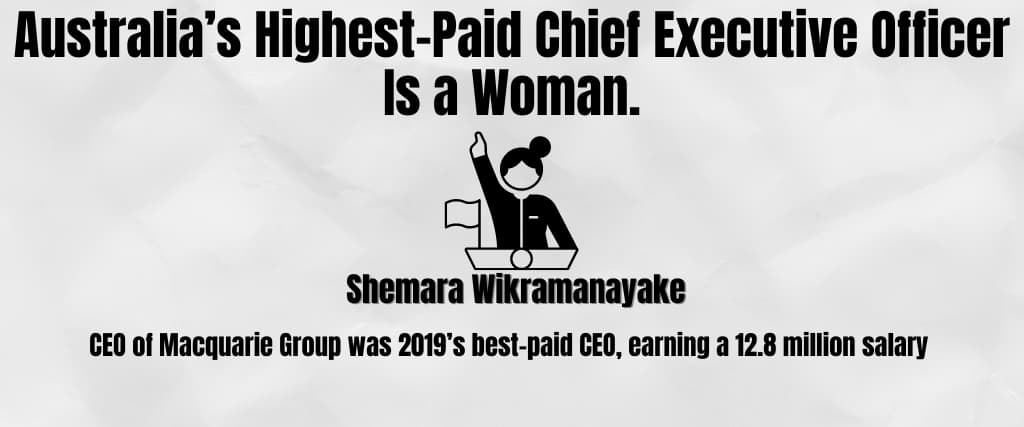Why have we never achieved gender parity? Why have women had to earn less than men for doing the same work for so long?
A persistent gender pay gap continues to hurt many women worldwide. The consequences of this gap affect these women down to their retirement income. While factors like skills, education, work experience, and working hours explain part of the pay gap, the main reason is gender discrimination.
Closing gender pay gaps is now more important than ever! To understand the gender pay gap in Australia, how it continues to ravage its economy and to be able to track its progress, we have some facts to analyse gender pay gap statistics based on labour statistics.
Buckle up, and let’s help figure this out!
Why Should We Continue to Try to Close the Gap?
- The gender pay gap in Australia is at 13.4%
- In Australia, women only make up one in every seven chair positions
- Men lead two-thirds of businesses in Australia
- To make the same amount of money as men in a year, women would need to work 59 more days.
- 10% of women are underemployed
- Women can only manage to save minimal retirement funds compared to men
- In sports, women earn $24,752 less compared to men
- In 2019-2022, only 32.5 of all women were part of the national workforce
- The scientific and technological industry leads with the highest wage gap of up to 24.4%
- Women experienced reduced working hours when the pandemic hit
Australia Gender Pay Gap Stats
1. Australian Women Experienced a 13.4% Pay Gap in 2020.
Is the wage gap an issue in Australia? The shocking reality is that even in these modern times and in a developed country like Australia, the gender wage gap continues to exist. According to a report by the Workplace Gender Equality Agency (WGEA) created by the Workplace Gender Equality Act of 2012, women in Australia earn 13.4 per cent less than Australian men.
The average weekly full-time wage for women across different jobs is $1562 compared to that of men, which is estimated at $1804 per week.
However, this is a significant improvement given that it is the lowest pay gap recorded in the last two decades.

2. In Australia, the Wage Gap Peaked at 18.5%.
The largest contributing factor to the wage gap was the discrimination of women in the workplace based on sex and gender, recorded at its highest in 2014. At the time, women were paid nearly a fifth less than men for the same amount of work.
3. To Equal Men’s Annual Earnings, Women Must Work an Additional 59 Working Days
The Equal Pay Alliance is an initiative driven by unions, communities, stakeholders and businesses committed to reducing the gender pay gap and making equal pay a reality in the country. This was formed to reduce the wage gap.
According to data presented by the Equal Pay Alliance in Australia, a woman would need to work an extra 59 days to make as much as a man in a year.

4. The Wage Gap Is Largest for Women Over 55.
According to studies in 2020 on wage gaps in Australia, working women aged over 55 years suffer the highest wage gaps making 17.7% less than their male counterparts in the same age group.
The second most impacted age group is working women between 35-44 years, who earn 17.3 less than Australian men working the same jobs.
5. Women Under the Age of 25 Experience the Smallest Wage Gap.
Working women who are below 20 years are the least affected by the uncontrolled wage gap. They, however, still suffer discrimination as men in the same age group make at least 1.9% more for the same amount of work.
Working women between 21-34 are second in rank, experiencing a difference of 14.2% between their pay and that of men in the same industry.
6. The Public Sector’s Gender Pay Gap in 2020 Was 10.6 per Cent.
Although the pay gap between men and women in the public sector has narrowed over time, pay disparities continue to exist. The public sector records lower wage disparities of 10.6% compared to the private sector, with the gender pay gap extending to 16.7%
This was a noticeable improvement compared to 1999, which recorded a wage higher wage gap of at least 5.4%

7. In Australia, Women Only Make Up One in Every Seven Chair Positions.
Men in Australia hold more than 85% of chair positions. Statistics from gender equality in the years 2019 & 2020 show that women have 28.1% of director positions in Australia, 18.3% in CEO positions and only 32.5% of managerial positions in both the private and public sectors.
8. One-Third of Australia’s Governing Bodies Are Exclusively Male.
The saddening truth is that 30.2% of governing bodies and boards of directors in Australia do not have a single woman in position!
This proves a significant fault in the gender employment workplace statistics in Australia. However, 0.4% of governing boards do not have any male members.

9. 9% of Women Lack Adequate Work Opportunities
Data from Australia’s Gender Employment Statistics shows that, in 2004, 9% of working women had work that did not match their skills and abilities, while only 5.1% of working men experienced the same issue.
In a study where 632,000 women were surveyed, one out of ten women proved they could handle more work but were stuck in part-time and flexible working environments.
10. Nearly All (98%) Australian Mothers-To-Be Had Jobs While Expecting.
Recent findings from the Australian Bureau of Statistics on the labour force data show that almost all women have had to work while pregnant. The study shows that women have had to choose between taking early maternity leave and sacrificing time with the baby or vice versa. One-third of the women chose the latter.
22% of women complained of discrimination in their workspace due to pregnancy. In addition, out of all women who had to return to work immediately after birth, half only worked part-time, and out of all first-time mothers, only 25% obliged.
11. Most fathers (81%) took Parental Leave.
In a study related to issues of workplace gender equality, out of the total surveyed fathers, 81% took paternity leave after birth. Of the 81%, 63% had paid leave. 33% had unpaid leave.
The duration for men’s leave is relatively short, with more than 70% have had to resume work after only three weeks of leave. This is a little different for fathers working in the public sector due to larger entitlements by the public sector allowing them to take up to five weeks or more paid paternity leave.
12. The Wage Gap in Western Australia Is 23%, the Highest of Any State.
Research by Workplace Gender Equality Agency, November 2022, shows that Western Australia has the highest wage gap at 22.4%. This is the highest recorded wage discrepancy in the entire continent!
The worry is that the numbers keep going up, with the disparity widening to 23% by the end of 2020.
Women in this part of the continent get paid up to 25% less than men for the same amount of work.
Second in rank is the Northern region, with a record of 13.9% in wage disparity which is noted to increase by 0.8% compared to the previous year.
13. The Australian Capital Territory Has the Smallest Gender Pay Gap.
The Australian Capital Territory has the lowest wage gap between genders at 6.3% and records the most significant improvement in reducing wage discrepancy from 2019 when it was highest at 8.8%.
The pay gap recorded in other regions of the continent are: Tasmania at 7%, South Australia at 8.3%, Victoria at 10.9%, and Queensland has a wage gap of 13.4%.
Industry-Specific Gender Pay Gaps

14. Men lead more Than 66% Of Businesses
The Australian Bureau of Statistics shows that women lead only 34% of businesses in Australia. Despite many political and social sector efforts to empower women in businesses, the numbers still need to improve.
Official records by the bureau show only a 3% improvement in more than two decades.
15. 32.4 % of Women Were Unemployed in 2019-2020
Almost half of the workforce in Australia is made of women. Research shows that out of that half, 32.4% remained unemployed between 2019 and 2020. In the men’s sector, only a fifth remained unemployed within the same period.
Women aged 30-39 years were affected the most compared to men in the same age group.
16. Women Take Upto Three-Quarters Of All Clerical And Administrative Jobs In Australia
In 2019 and 2022, 72.7% of women were in administrative and clerical jobs. Women dominated lower-ranked positions in the community, such as sales and personal service.
On the other hand, men occupied jobs in machinery operations as technicians, trade workers, drivers and labourers. During this period, 64.1% of managerial positions were occupied by men, while women occupied only 38.6%.
17. Scientific, Technical, and Professional Services Have the Greatest Pay Gap
Based on research by the Workplace Gender Equality Agency, 2020, the wage gap in the scientific and technical service industry is the highest at 24.4% compared to other sectors.
The agency expresses a concern as the gap only worsens with an increase of 2.3% compared to the previous year.
The difference between men’s and women’s wages in the industry was 22.1% in 2019.
18. A 22.6 Percent Gender Pay Gap Exists in the Financial and Insurance Industries.
According to the Workplace Gender Equality Agency, women working in the insurance and finance industry in Australia experience the second highest level of pay discrepancy compared to other sectors in the economy.
Women in this sector are paid at least a fifth less than men, working at the same level for the same amount of work and hours.
The gender pay gap in this sector has been increasing noticeably from 22.2% in 2019 to 22.6 by the end of 2022.

19. Women In Technology Sector Earn 40% Less Than Men.
With salaries ranging from $45,000 (marketing specialist) to $225,000 (senior designer), calculations by Kardon show that women working in these positions in tech companies are experiencing a wage discrepancy of up to $10,000 yearly.
20. In the Venture Capital Industry, Women Make Up Only 40% Of the Partners.
Only a few women decide to venture into business ownership and entrepreneurship. This, and the fact that they earn less in most offices, means they get to apply for business incubators and accelerators at a much-reduced rate. This, in turn, creates a vicious cycle where even fewer women-led and women-owned companies get funding from venture capital firms.
This results in 70.6% of these firms being owned, managed or led by men.
21. Men Own More Than Three-Quarters of Startups.
A study was carried out in October 2022 by MYOB. It confirmed that only 27% of start-ups sought financial investments or women-owned backing within the year. The situation only deteriorated with the Covid-19 pandemic, as moms struggled with schooling, home responsibilities and child care.
79% of companies led by women who sought venture capital were successful in financial investments, compared to the 83% that men owned. This shows that financial institutions will consider women seeking help to start their businesses. However, they do so at a relatively lower rate.
22. A Gender Pay Gap Exists In The Public Sector
Based on a study by the Workplace Gender Equality Agency, the public sector and services relating to the public sector have reported a wage discrepancy based on the worker’s gender.
However low at 6.3%, you can not ignore the difference given that it’s an increase compared to 2019, when the wage gap was only at 5.7%.
The sector is commendable for maintaining wage differences at the lowest levels compared to other sectors.
23. Arts And Recreation Industries Record The Highest Decrease In the Wage Gap
The disparity between wages of men and women in the arts & recreation industries reduced by 5.1% between 2019- 2020, followed by the wholesale industry, which recorded a decrease in wage disparity by 3.1%
The wage difference between men and women in the arts and recreation industry now stands at 9.4%.
24. Women Are predominantly Occupying The Least Paying Job Positions
Women dominate jobs in the administrative sectors holding positions such as clerks and assistants, which generally attract lower pay in the industries. In Australia, a full-time job as an administrative assistant attracts a pay of $50,000 per year. In comparison, a job as an administrator, on average, attracts a pay of $78,000 per year.
Not only do the women in Australia get less pay for the same jobs as men, but they also seem to be the majority of the people occupying the least-paid or worst-paid jobs.
25. Women In Sports Make A Third Less Compared To Men
A study by the Australian Bureau Of Statistics shows a huge disparity between men’s and women’s wages in the sports sector. On average, men in sports earn up to $67,652 a year, while women in a comparable position earn $49,200.
The sector argues that the difference in pay is contributed by factors such as high viewer ratings for men’s sports compared to women and higher turnout for men’s matches compared to women’s.
26. Women Have Significantly Lower Retirement Savings Compared To Men
The amount of money an individual makes is directly proportional to how much they can contribute to their retirement fund. The significant wage disparity does not favour women. Based on data from the Financial Services Council, there existed a 31% gap in retirement savings between Australian men and women in 2020. This reflects low financial security for women impacted by the alarming gap in retirement savings and superannuation.
Half of the women aged 45-59 had $8,000 or less in retirement savings compared to men in the same age group who had managed savings of up to $31,000. The largest discrepancy was between women aged 45-54 years, with the biggest superannuation gap of 43% fewer retirement savings than men in the same age group.
As a result, the median retirement income in the year 2015-2016, was approximately $111,853 for men. Women had only managed to save $68,449.

27. Australia’s Highest-Paid Chief Executive Officer Is a Woman.
Interestingly, Shemara Wikramanayake, CEO of Macquarie Group was 2019’s best-paid CEO, earning a 12.8 million salary alongside various other successful Australian women such as Susan Lloyd-Hurwitz from Mirvac Group and Coca-Cola Amatil’s Alison Watkins according to the CEO Magazine.
28. Women Received The Greatest Reduction In Working Hours during Covid
Dating from mid to early 2020, a study shows that both genders in the workplace experienced fluctuations in working hours and wage rates because of the pandemic; according to Australian gender employment statistics, however, women were more affected by the pandemic compared to men.
Fortunately, this was reversed after the pandemic and women were noted to pick up more working hours between May to August 2020.
29. Women Dominated Industries Experience The Highest Decline In Pay
Jobs in administration, clerical and personal services, which are female-dominated in Australia, have recorded the lowest cash out in payrolls compared to other sectors. This, in turn, has a significant impact on Australia’s women’s ability to save and have retirement funds.
In addition, the Finance and Insurance Service industry, which comprises more women in the workforce, also registered a significant salary decline of 14.5%. A more devastating fact is that these are the same sectors with the highest pay disparity between men and women. This will only worsen financial conditions for the women working in these sectors crippling their financial & social security during the pandemic.
30. In 2023, Australia Will Have Had Its Equal Pay Law in Effect for 54 Years.
Australia was one of the countries that helped draft and adopt the principles of the 1948 Universal Declaration of Human Rights, which included the right to equal pay for men and women. The Equal Pay Act of Australia, as the subsequent law would come to be known, was enacted the following year, in 1969. That plan was meant to bolster existing efforts to close the gender pay gap.
The Workplace Gender Equality Agency of Australia was established as part of the 2012 Workplace Gender Equality Act, which is the country’s most significant piece of equal pay legislation. A wealth of reliable data on workplace sex discrimination can be found at the Workplace Gender Equality Agency.
Comparing the Gender Pay Gap In Australia Vs The U.K
The UK and Australia are among the nations that have a moderate pay gap worldwide.

31. The Gender Pay Gap Dropped To 15.5% In the UK In 2020
According to a study by the Office of National Statistics of the United Kingdom, the UK still records a higher pay gap than Australia despite a noticeable decrease of 1.9% in 2019.
32. Finance, Insurance And Construction Industries Have the widest Wage Disparity In The UK
Like in Australia, among other industries, the UK’s finance & insurance sectors have recorded the highest uncontrolled disparity between men’s and women’s wage rates. However, the UK differs in that its construction industry is among the most notorious sectors in the gender pay gap.
33. The Gender Pay Gap Was Not Affected By The Pandemic
Even though the pandemic hit the UK labour market hard, only 11.2% of all employees had their wages decreased, concerning reduced working hours. In actual figures, about 10% of females in the workplace and 12.5% of men experienced changes.
However, the pandemic’s effect on women in Australia and the UK is not far apart, with women experiencing more adverse effects than men in the same workplace.
34. Australia And The UK Are Among The Countries With Moderate Pay Gaps
When you look at the bigger picture, even though these two countries are battling the disparity of men’s and women’s pay, and the extent of gender pay inequality, both are doing pretty well globally. The pay gap figures recorded by Australia and the UK pale if you were to compare them to other countries such as South Korea, whose gap is calculated at 40%, Japan, or Estonia.
Bottom Line
The gender pay gap is reducing but remains persistent in some countries more than others. Research and studies over decades have proven to encourage improvement in the disparity in the pay gap between men and women. Some sectors of the economy, including the administrative sector, sports, arts and personal relations, demand that we keep pushing for better social and economic rights that will ensure both genders are paid equally.